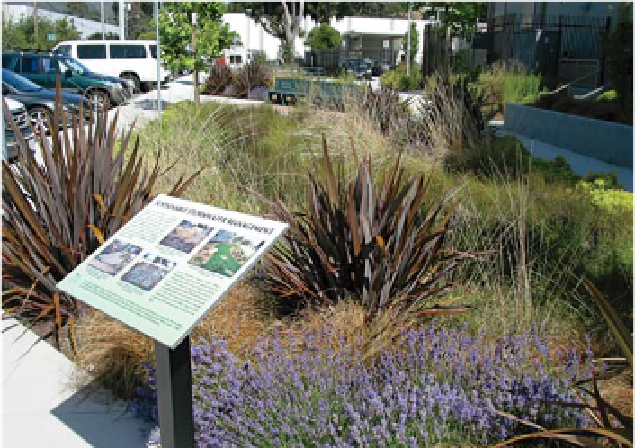Biology Reference
In-Depth Information
The quest to pave streets, build houses, control flooding, and provide safe
drinking water has changed many Bay Area creeks almost beyond recog-
nition.
Once, interactions among soil, water, and vegetation helped creek wa-
tersheds absorb the flood flows produced by storms. In some areas, for
example, live oaks and other perennial trees held raindrops in their cano-
pies for many hours. The leaves held rain like a sponge, preventing the
surge of water from overwhelming streambeds. Fungal filaments and the
roots of native grasses held soils together and leaf litter roughened the sur-
face, slowing flows. Overflows pooled in freshwater marshes.
Changes began when the Spanish introduced ranching to the Califor-
nia landscape. As densities of cattle, goats, and horses expanded under
American management, they trampled the riparian vegetation holding
creek banks in place, compacted the ground with their hooves, and de-
voured the fallen leaves that once sheltered the soil.
Wetlands engineer Jeff Haltiner of Philip Williams Associates recalls
visiting gulches in Monterey County where only deer had ventured for at
least 150 years: “There was a foot of duff, pine needles, and oak tree leaves.
When it rained, you'd never see the water run of the surface of the ground.
It just went into this whole matrix like a sponge.” By contrast, he says, the
A rain garden at Brisbane City Hall funnels urban runoff laden with oil and contami-
nants into a living filtration system made of plants and soil. (Matt Fabry)


